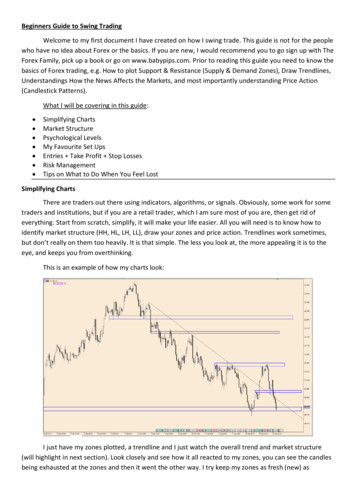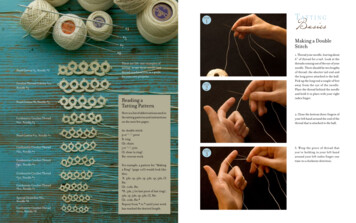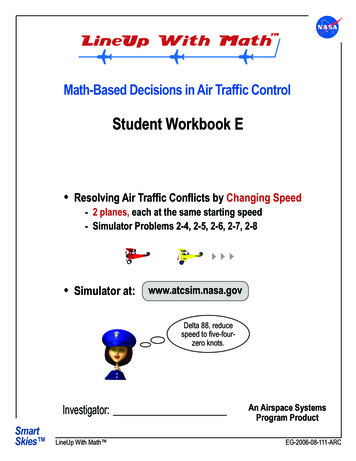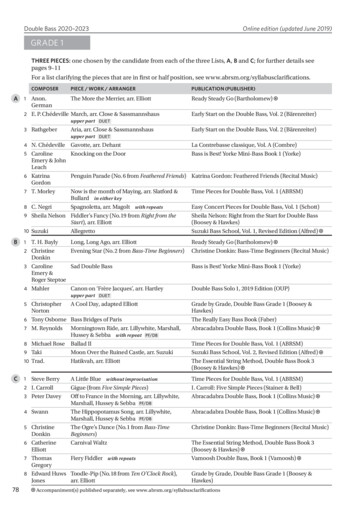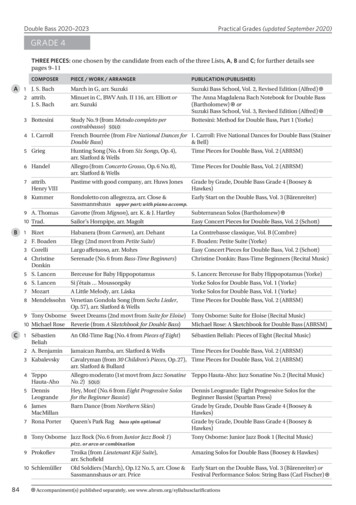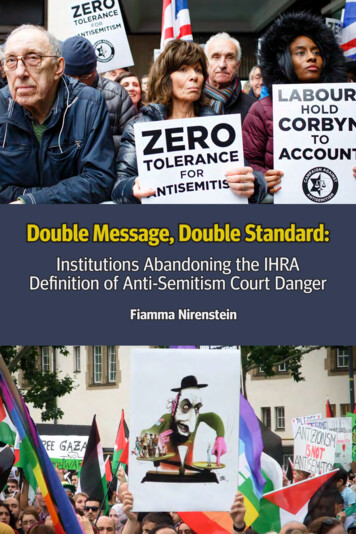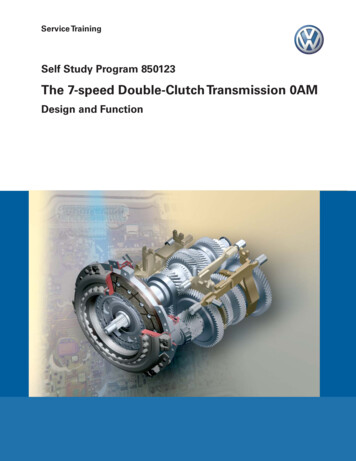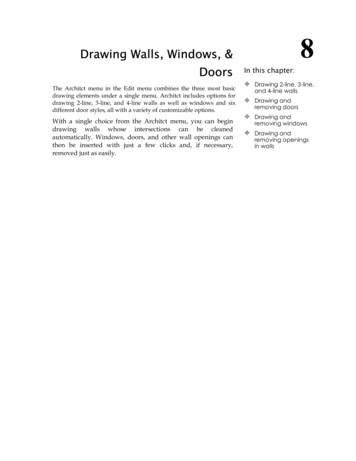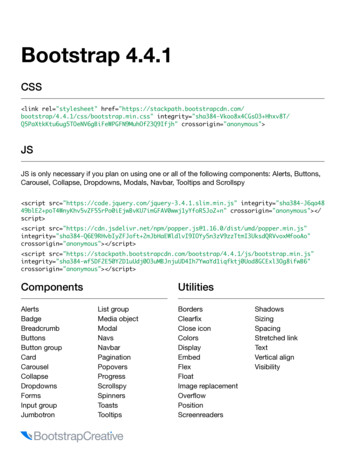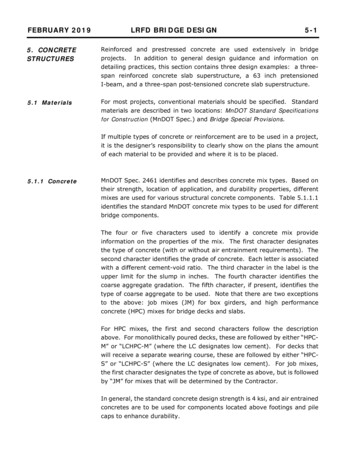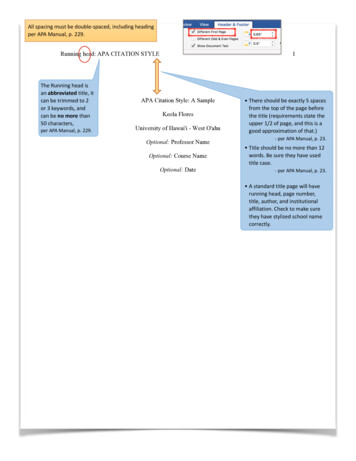
Transcription
All spacing must be double-spaced, including headingper APA Manual, p. 229.Running head: APA CITATION STYLE1The Running head is anThe Runningabbreviatedtitle, it headcan beisan abbreviatedtitle, andittrimmedto 2 or 3 keywords,bemoretrimmedcancanbe nothan 50to2or 3 keywords,and p.characters,per APA Manual,can229.beAllnomoremustthanspacingbe50 characters,double-spaced,including headingAPAManual,p. 229.perperAPAManual,p. 229.APA Citation Style: A Sample ThereThereshouldshouldbebeexactlyexactly5 5spacesspacesKeola Florestitlethe(requirementsstate thestateuppertitle (requirementstheUniversity of Hawai'i - West O'ahuOptional: Professor NameOptional: Course NameOptional: Datefromthethetop topof thepagepagebeforethefromof thebefore1/2andof page,this is a1/2upperof page,this isanda goodgood approximationthat.)approximationof that.) -ofperAPA- per APA Manual, p. 23.Manual, p. 23. Title should be Titlebewords.no morenomoreshouldthan 12Be thansure 12words. Be sure they have usedtitle case.they have used title case. - perAPA Manual, p. 23. A- per APA Manual, p. 23.standard title page will haverunninghead, titlepagepagenumber,title,will have A nningpage number,Note: This message can only be read byscreen readers. This paper contactsnumerous comments regarding APAformatting. To not disrupt the flow of thepaper, these comments have been movedto the footnotes on each page.Checkmake surethey havetitle,toauthor,and institutionalaffiliation.make d Allhavespacingmustschoolbe namecorrectly.double-spaced, including headingper APA Manueal, p. 229.
APA CITATION STYLE2AbstractYour abstract page should already include the page header (described above). On the first line ofthe abstract page, center the word “Abstract” (no bold, formatting, italics, underlining, or quotationmarks). Beginning with the next line, write a concise summary of the key points of your research.(Do not indent.) Your abstract should contain at least your research topic, research questions,participants, methods, results, data analysis, and conclusions. You may also include possibleimplications of your research and future work you see connected with your findings. Your abstractshould be a single paragraph double-spaced. Your abstract should be between 150 and 250 words.You must list keywords from your paper in your abstract. To do this, indent as you would if youwere starting a new paragraph, type Keywords: (italicized), and then list your keywords. Listingyour keywords will help researchers find your work in databases. Here is an example below. Allof the above information can be found in section 2.04 of the sixth edition Publication Manual ofthe American Psychological Association.Keywords: APA, heading, citation, style, formatting, in-text citation, referencesOnly “Keywords” isitalicized. Propernouns should be intitle case, all otherkeywords arelowercase. Students often use indentedparagraphs. This is incorrect. Abstracts are brief, comprehensivesummaries of the paper. They shouldroadmap the salient points addressedin the paper.- per APA Manual, p. 25 We want to encourage precision oflanguage. Business writing concise, succinct,straightforward.
APA CITATION STYLE3Uniform double-spacingRepeat Title HereUniform double-spacingWith American Psychological Association (APA) style, the first heading should never beUniform double-spacing“Introduction”. Instead, the paper’s title should be used. The entire paper is to be double-spacedthroughout, and font should be 12-point, Times New Roman unless otherwise indicated by theinstructor. Margins should be 1” all around unless otherwise indicated by instructor.This is a First Level Heading with Bold LetteringOne of the most important aspects of APA citation style is in-text citation. In general, theauthor’s name and the year should be included, with a comma separating the two (Noeau, 1999).Remember that the period always comes after the citation to enclose it with the sentence. Whenthere are two or more names, they are separated by commas, and there is an ampersand before thelast name (Eichner, Nakashita, & Chung, 2005). If there are three or more authors, all names arelisted with the first citation, and then each subsequent citation can use the “et al.” notation, whichis Latin for “and others” (Eichner et al.). The preceding citation does not have a year becausewhen the same source is cited within the same paragraph, the year does not need to be listed again.This is a Second Level Heading with Bold LetteringAccording to Blath (2000), the citation can also be put at the beginning of the sentence inthis way, and does not need to be cited again at the end of the sentence. One exception to the “etal.” rule is when a source has seven or more authors, in which case the writer does not need to citeall names the first time and can automatically use “et al.”. In some cases, multiple sources arecited to support one point, in which case the sources are separated by semicolons (Eichner et al.,2005; Satalkar, 2010).This is a third level heading with bold lettering and indentation. According to Satalkar(2010), “whenever quoting a source, a page number is required” (p. 5). In this example, the name Font required to be Times New Roman, 12 pt Want to encourage use of “justified” font align,which makes even blocks of text. Level 1 and Level 2 headings required in allBUSA WI courses. Level 3 optional.
APA CITATION STYLE4was mentioned at the beginning, and the page number was placed at the end. The two rules toremember here are that the author’s name and the year should never be separated, and at the sametime, the page number should always be at the end of a quote. The in-text citation “can also be setup so that all the information is at the end of the quote” (Eichner, 2010, p. 6).
APA CITATION STYLE5ReferencesBlath, S. (2000). The unabridged journals. K. V. Kukil (Ed.). New York, NY: Anchor.Eichner, A. H., Nakashita, G. H., & Chung, L. R. (2005). Why citation styles are important.Journal of Citation, 5(10), 12-26.Noeau, J. T. (1999). Citation styles in scholarly research: Notations for various professions.Journal of Citation, 1(2), 16-28.Purdue University OWL. (2014). APA Style: General Format. Retrieved .english.purdue.edu/owl/Satalkar, B. (2010, July 15). Water aerobics. Retrieved from http://www.buzzle.comNotes about the reference list A hanging indent is used, where the first line of each entry is flush left and subsequent lines areindented. Basically, this is the reverse of a paragraph indent.For all citations, each piece of information is separated by periods. The authors are listedalphabetically by their last name, with the first and middle initials after a coma. There is anampersand before the last author in a list as opposed to the word “and”.The first citation is for a book. Book titles are in italics, followed by the location of the publisher andthe name of the publisher.The second and third citations are examples of journal articles. The article title comes first, followedby the journal name and issue number italicized. Note: “Issue” and “volume” could also be replacedby “No.,” depending on the journalThe last two citations are examples of an online source. These can be very tricky, since websites donot need to follow a set format. At the very least, the citation should include an author (or anaffiliated organization), year of publication (or last updated date / year for the website), a title, andthe URL. Note: Past editions of the APA manual require retrieval dates, but the latest version (2010)states that retrieval dates are no longer included.
APA CITATION STYLE 3 Repeat Title Here. With American Psychological Association (APA) style, the first heading should never be "Introduction". Instead, the paper's title should be used. The entire paper is to be double-spaced throughout, and font should be 12-point, Times New Roman unless otherwise indicated by the instructor.
